When life was literally stilled during the pandemic, long hours spent at home made us look at the spaces and objects around us with new focus. Many of us arranged and rearranged our mantelpieces, kitchen shelves and desks, adorning them with gatherings of objects that brought us comfort – trinkets from foreign travels, gifts from cherished friends, treasured antiques inherited from relations and mementoes from parties past. Some shared photographs of these pleasingly curated arrangements on Instagram, where they are known as ‘shelfies’. But for a small group of British artists it was business as usual: they had long been painting and drawing carefully assembled vignettes of objets trouvés and decorative antiques, their work united by a shared appreciation of vintage pieces.
SJ Axelby –@sjaxelby
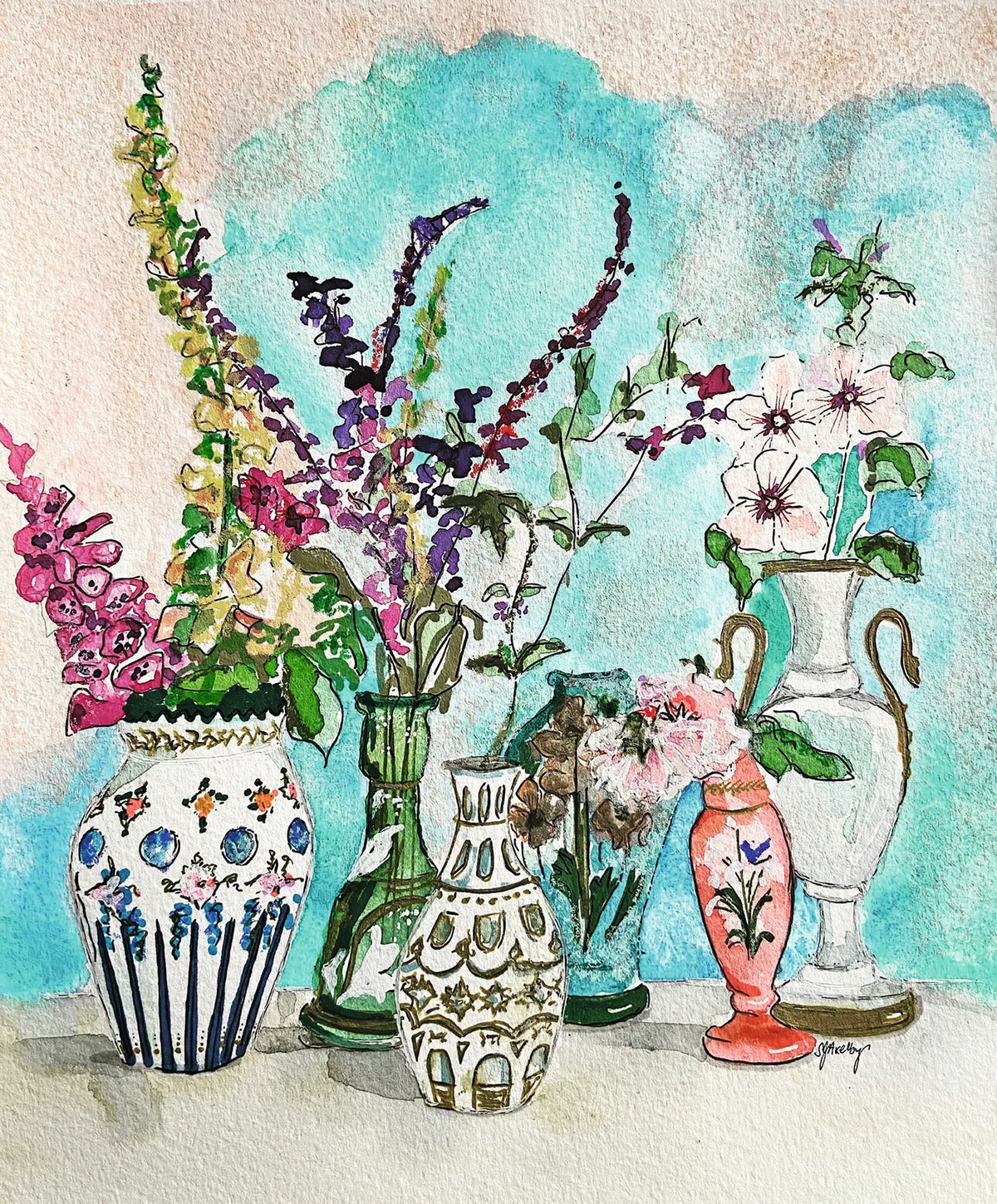
‘It’s about capturing memories,’ says ceramics collector and artist SJ Axelby, who is known for creating colourful, finely drawn mixed media work inspired by her own collections as well as beautiful interiors she admires. ‘I always bring something back from my travels and my shelves become time capsules,’ she says, likening them to Victorian cabinets of curiosity. ‘The shelfie is a modern way of doing that; it’s a mini museum of special objects – things that have sentimental if not great monetary value.’
Unity Coombes –@unitycoombes
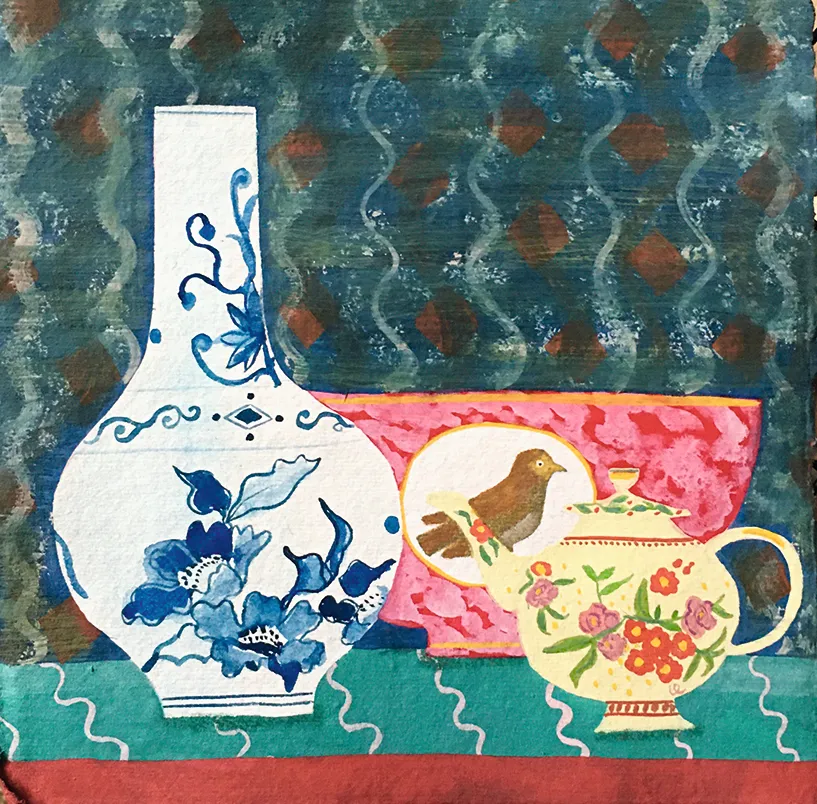
Artist Unity Coombes'playful shelf portraits often feature painted Chinese porcelain, Japanese tea bowls and plates inspired by the Eastern Art collections she cares for in her other role working at Oxford’s Ashmolean Museum. ‘Objects that have existed for a long time have an extra quality about them,’ she says. ‘It’s not about finding very expensive or rare pieces. It’s that other people have handled them, they come withhistories. For this moment they’re in my hands, but I hope one day my son will handle them and many after him. When I come across something in a charity shop that’s 200 years old there’s always that ‘wow!’ moment, knowing it has survived all that time. It’s like finding treasure.’
Inspired by 20th-century female British artists working in the still life tradition, Unity’s colourful worksare known for their fine detail. ‘I’m drawn to pattern and surface decoration, particularly of animals, birds and figures. Even when I paint animals they tend to be inspired by ceramics, by Staffordshire or Meissen pieces. I like the naivety of them, and the characterful decoration.’
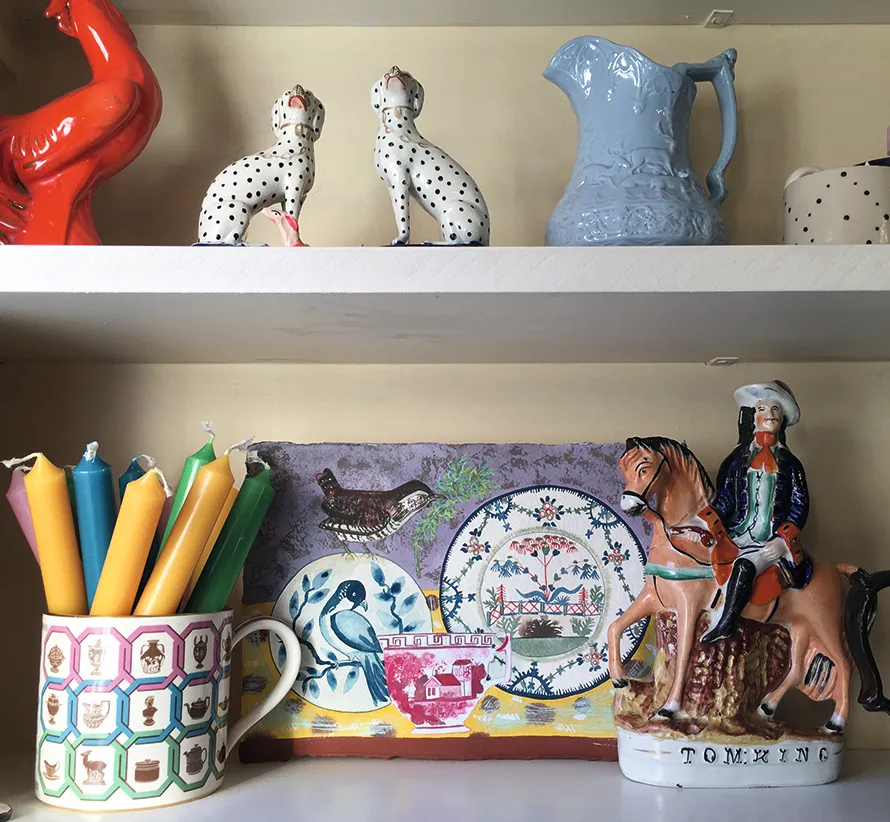
Debbie George –@debbiegeorgeartist
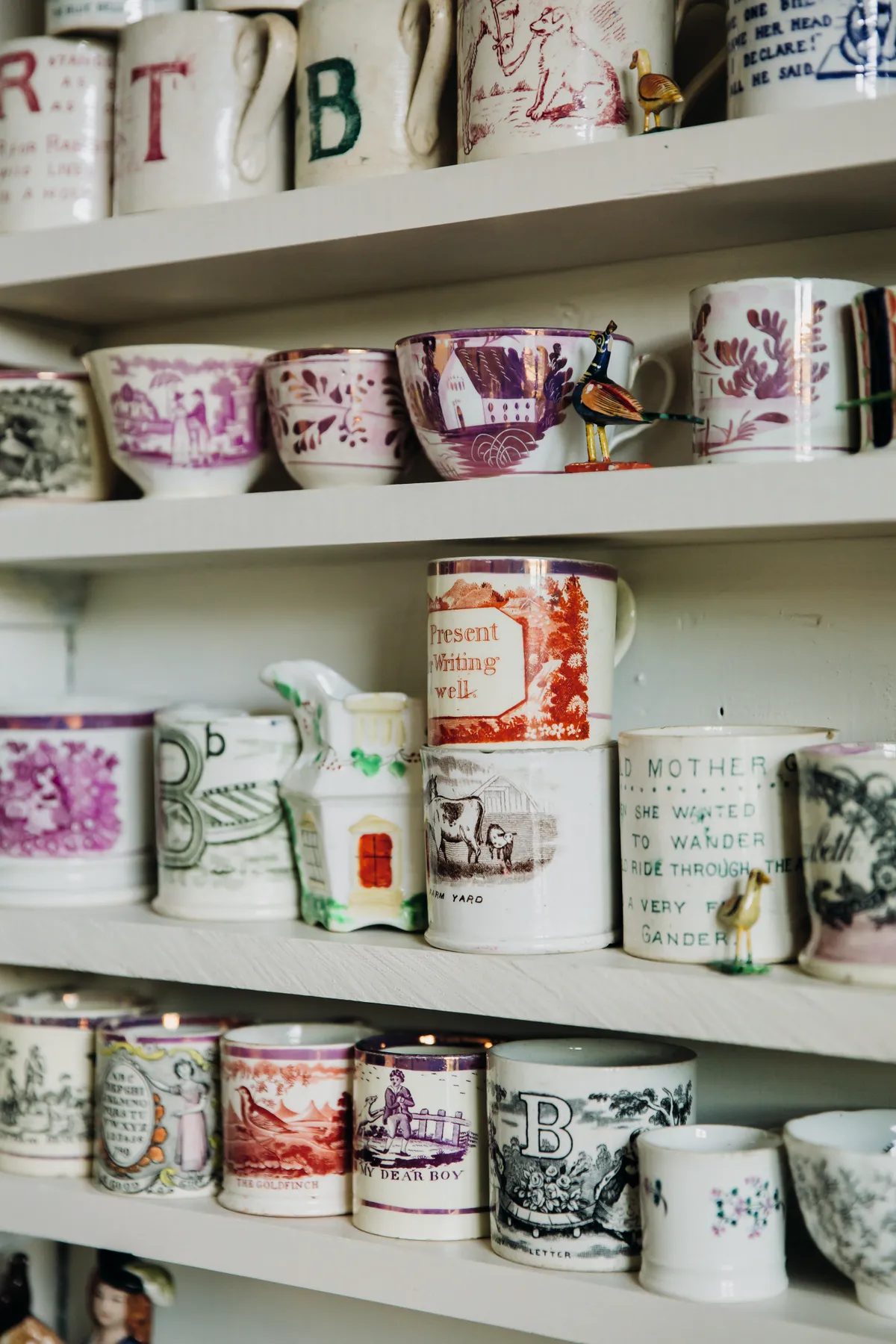
Another artist noted for her detailed depictions of antique ceramics – often a hand-painted cup filled with a posy of seasonal flowers – is Yorkshire-based Debbie George. ‘I’ve just sourced the smallest brush I can, a ‘000’, so things are about to get even more detailed,’ she quips when we speak. Growing up with an artist mother and a grandmother whose house had ‘pottery, antiques and paintings everywhere’, she knew she wanted to be an artist from the age of eight. ‘There was always a pot, always flowers,’ she says. ‘I love the shape of a flower or the pattern of a cup and want to put them together. Granny always had huge vases of flowers and Mum was a gardener, so there were always fresh flowers in the house. I loved going home and finding a little posy of flowers by the bed. Now they’ve both passed away the memories and emotions attached to those things are even stronger.’
As Debbie’s followers know, she is an avid collector of ceramics, with a special interest in antique children’s ware that was prompted by the purchase of a tiny cup from Richard Scott Antiques in Holt two decades ago. Painted with the motto ‘Present for a Good Girl’ it was the start of an ever-growing collection. ‘It’s amazing what they put on nursery ware – poems, educational motifs and so on – but the naivety, the detail and the small scale also appeal to me.’
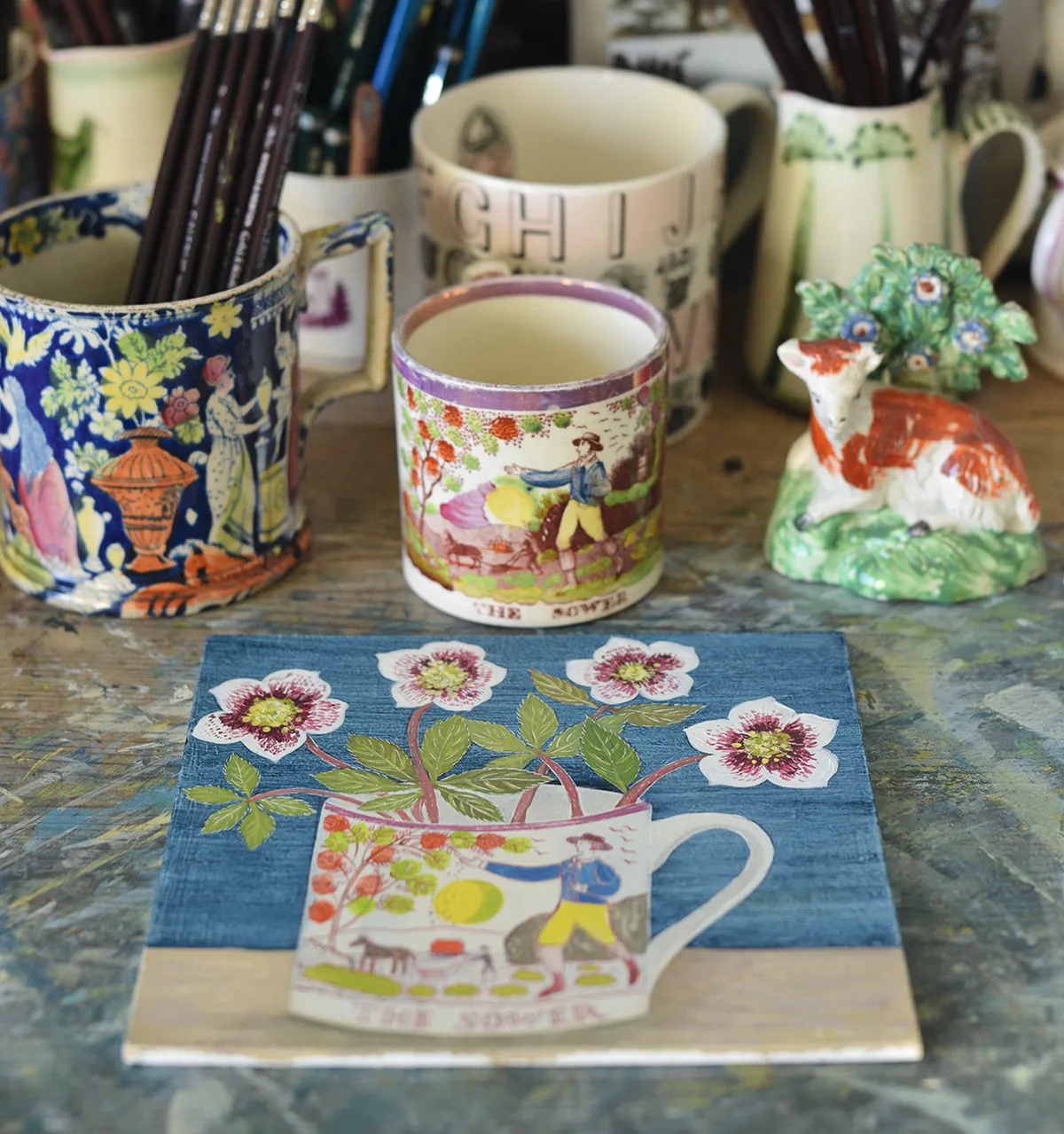
Angie Lewin –@angielewin
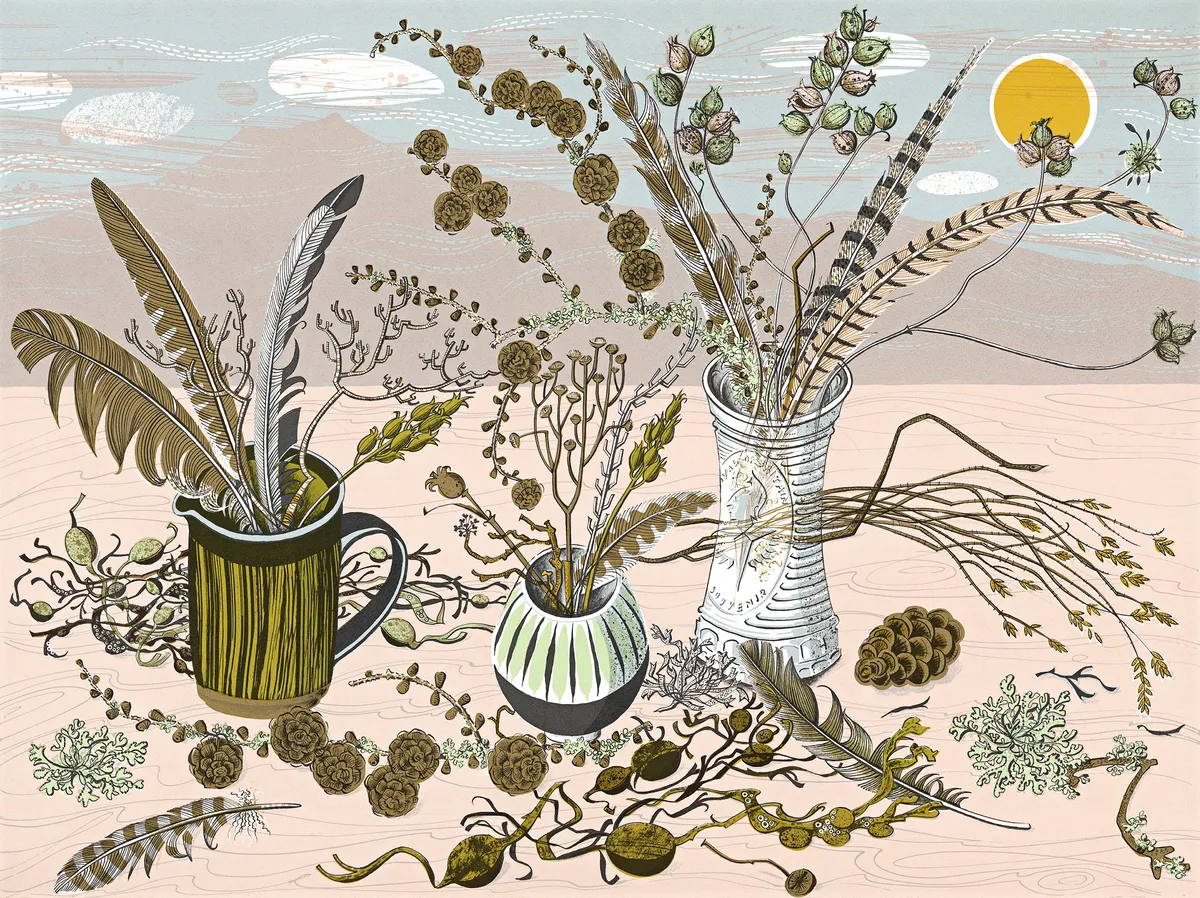
Printmaker and painter Angie Lewin’s fascination with ceramics began with a cup. ‘When I was about four years old I visited an elderly relative who had a collection of ceramics and she gave me a small Spode coffee cup,’ she remembers. ‘It was hand-painted with a shepherd, and a little flock of sheep. I was fascinated by it.’ That appreciation of decoration remains with Angie today. ‘If I see a coffee cup or vase, I’m drawn almost more to the design than the form,’ she says, ‘though with antiques I also like the history. I get very absorbed in the stylisation. The pieces I own often have botanical imagery on them, stylised by an artist in whichever era they were working. I like to think about how they chose to do it – I’m intrigued by their thought patterns.’
Angie’s characteristic nature table depictions pair antique ceramics with hedgerow and seashore finds foraged from the hills around her Speyside home, the nearby Moray coast or the landscapes she walks while visiting St Jude’s Prints, the Norfolk-based printmakers’ gallery she set up with her husband Simon in 2005. Her work tends to start with something she’s been sketching that day – fritillaries from her garden, or a Staffordshire figure of a kilted Highlander. Then she scans her studio to find other items. A little lustre mug might catch her eye, or a feather, and pieces develop as she puts things together on the mantelpiece. ‘Evolving jumble is probably a good way of putting it,’ she jokes, though the end result is anything but jumbled – precise, detailed work that reflects her deep horticultural knowledge.
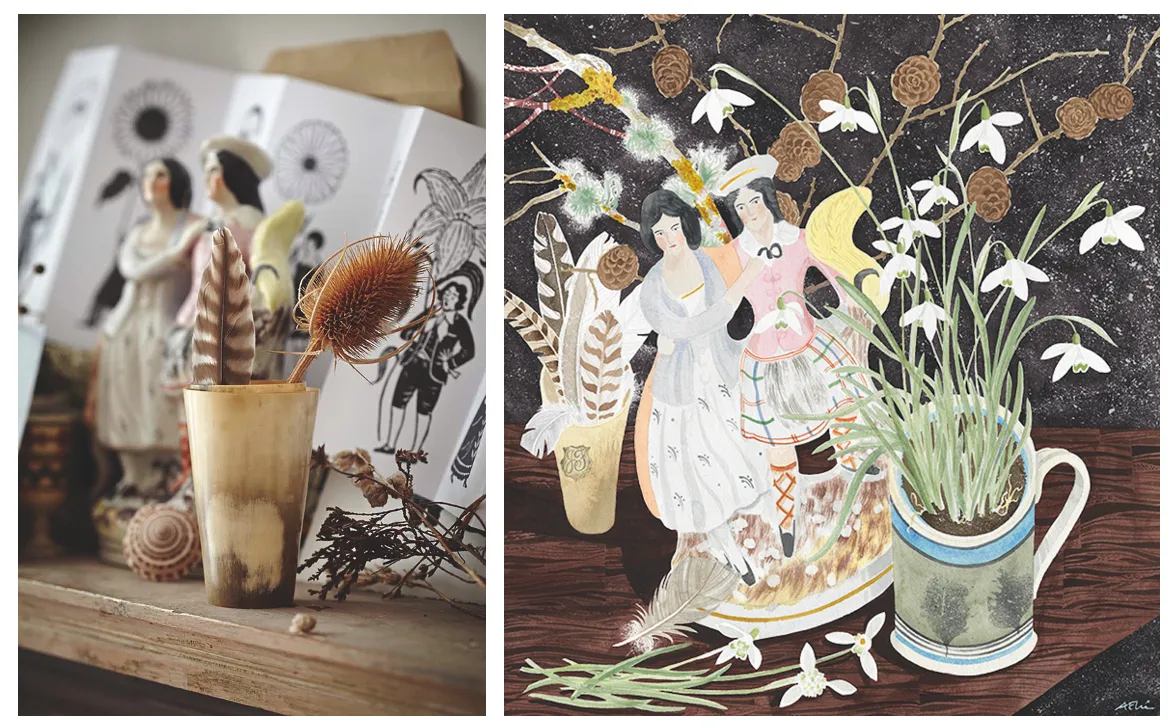
Joanna Wright
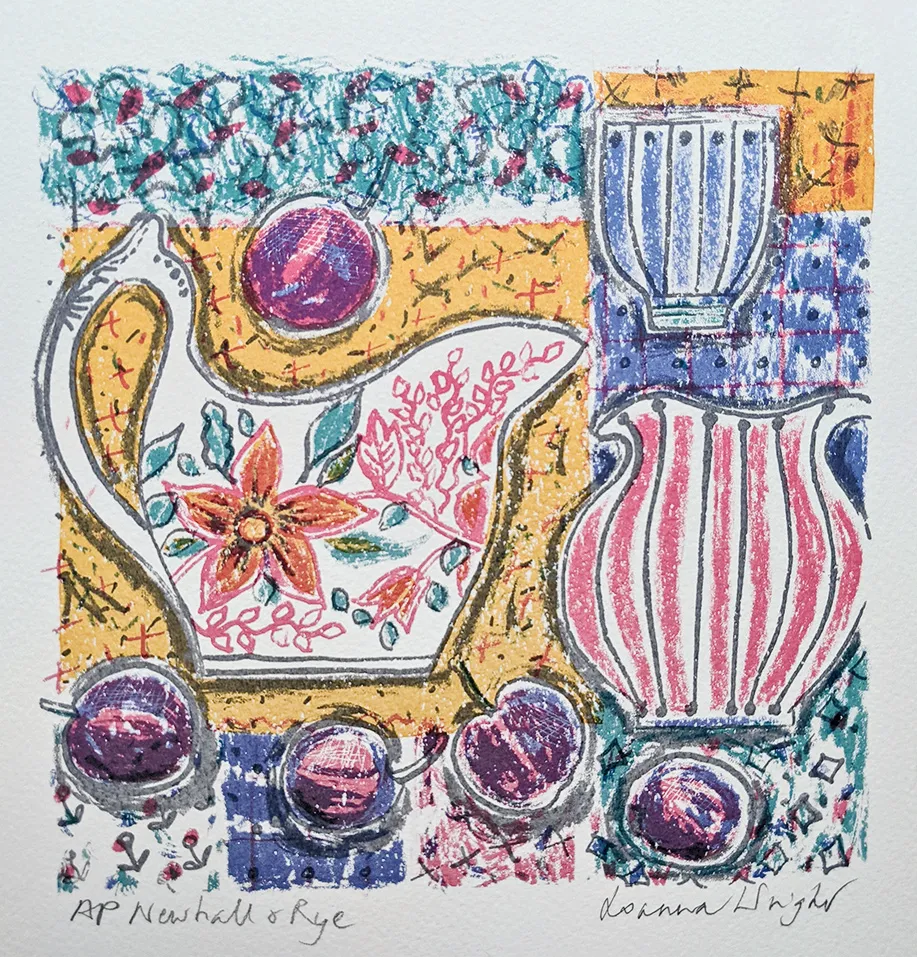
Bristol-based artist Joanna Wright jokes that ‘pots and pears seem to be what I do.’ A long-established exponent of the shelf-based still life, her paintings, prints and textile work often include pieces from her collection of antique and vintage ceramics, and it’s the everyday nature of these objects that appeals to her. ‘They’re the sort of things people might relate to,’ she says. ‘There’s nothing exotic or fantastical about them. You can get endless permutations with an apple and a pear and a cup, and you’ve always got those objects to hand.’
Crediting her mother with sparking her interest in collecting – ‘we were always whizzing off to junk shops and jumble sales growing up and I’ve inherited that gene’ – she now has a diverse collection of antique cups. Most are early 19th- century English teaware but she also owns some treasured pieces hand-painted by her mother-in-law, Star Wedgwood (a designer-decorator for Wedgwood in the 1930s) and some mid-century pieces.
One of Joanna’s favourites is a three-handled 1940s jug with a wiggly leaf pattern and, crucially, a bright orange stripe at the bottom. ‘I’m glad to see colour is coming back,’ she says. ‘It cheers us up. We need orange and turquoise in our lives.’
Emily Maude - @emilymaudey
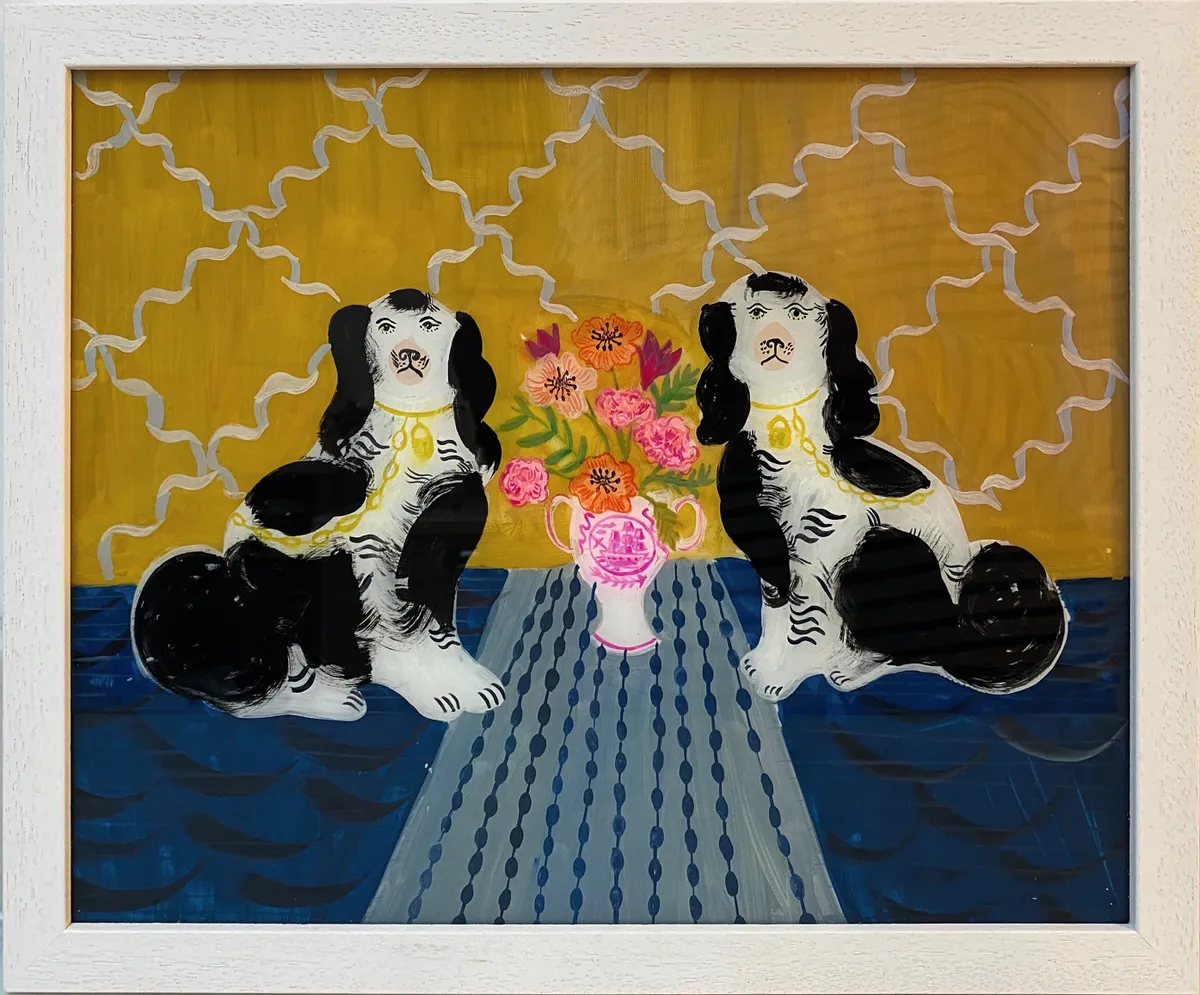
The work of Brighton-based illustrator and designer Emily Maude is diverse and constantly evolving, but she has won a recent following for her imagined tableaus based on what she calls her ‘dresser of dreams’ – collectable ceramic pieces set against antique fabrics and wallpapers. Vividly painted – sometimes on paper, sometimes using a reverse glass technique – her shelfie-style montages often include Staffordshire dogs and pink lustreware.
Colour has been a relatively new development for Emily. ‘I guess those jewel-like shades come from wanting to find joy in a bleak time,’ she says. But Staffordshire dogs have long been a source of inspiration. ‘They’re part of the country’s folk art heritage. Like lustreware, they were made to be affordable but, although they were mass-produced, each piece is slightly different and has its own character because it was hand-painted. It intrigues me, when I pick one up, to think: “Who would have
decorated this?”’
Lottie Cole - @lottiecole1
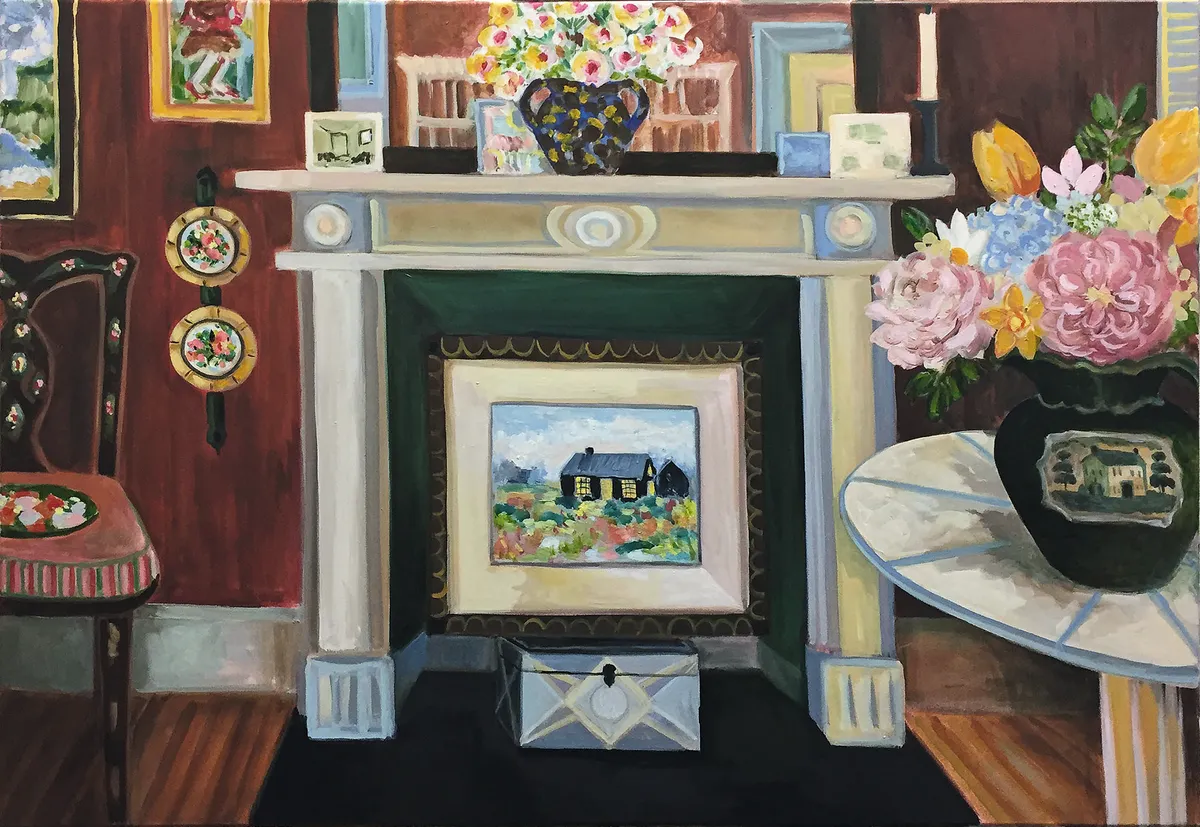
For painter Lottie Cole it’s not the question ‘Who painted this?’ that inspires her, but rather ‘Who might have owned this?’ She approaches her interiors-based paintings by thinking about the imaginary person who might inhabit the room she is creating. She then lets herself go on an imaginary shopping spree, she explains. ‘I don’t own very much of what I paint. Painting my own house doesn’t excite me. It’s the thrill of the chase, the conjuring up, the thinking: “That parrot would be hard to dust!”’
The parrot in question appears in one of a series of mantelpiece paintings Sussex-based Lottie has recently been working on. ‘I didn’t want to do straight still lifes but I was attracted to mantelpieces because they’re the stage sets of people’s lives,’ she says. ‘I listened to a radio documentary discussing mantelpieces as shrines to people’s aspirations, how they hold the things we love, the invitations to events. They’re a reflection of how we’d like to be seen, perhaps, rather than how we really are.’
Her paintings, which often incorporate antiques, are similarly an attempt to describe the idea of home. ‘Women are so good at making a home,’ she says. ‘Often you’ll have a beautiful room, but it’s not perfect. There’s that hideous heirloom you’ve kept because you love it. That interests me. I like to imagine the story behind each item I paint. I have a pair of ceramic pheasants on my mantelpiece that I found in a junk shop. They really shouldn’t go in that room but they mean something to me and I love them, and somehow they work.’ She finds immaculate interiors hotel-like and too perfect. ‘If you look at my paintings you’ll see that small tables may be squished up too close to a sofa, or a chair may be blocking something else. But that’s how we live,’ she says.

